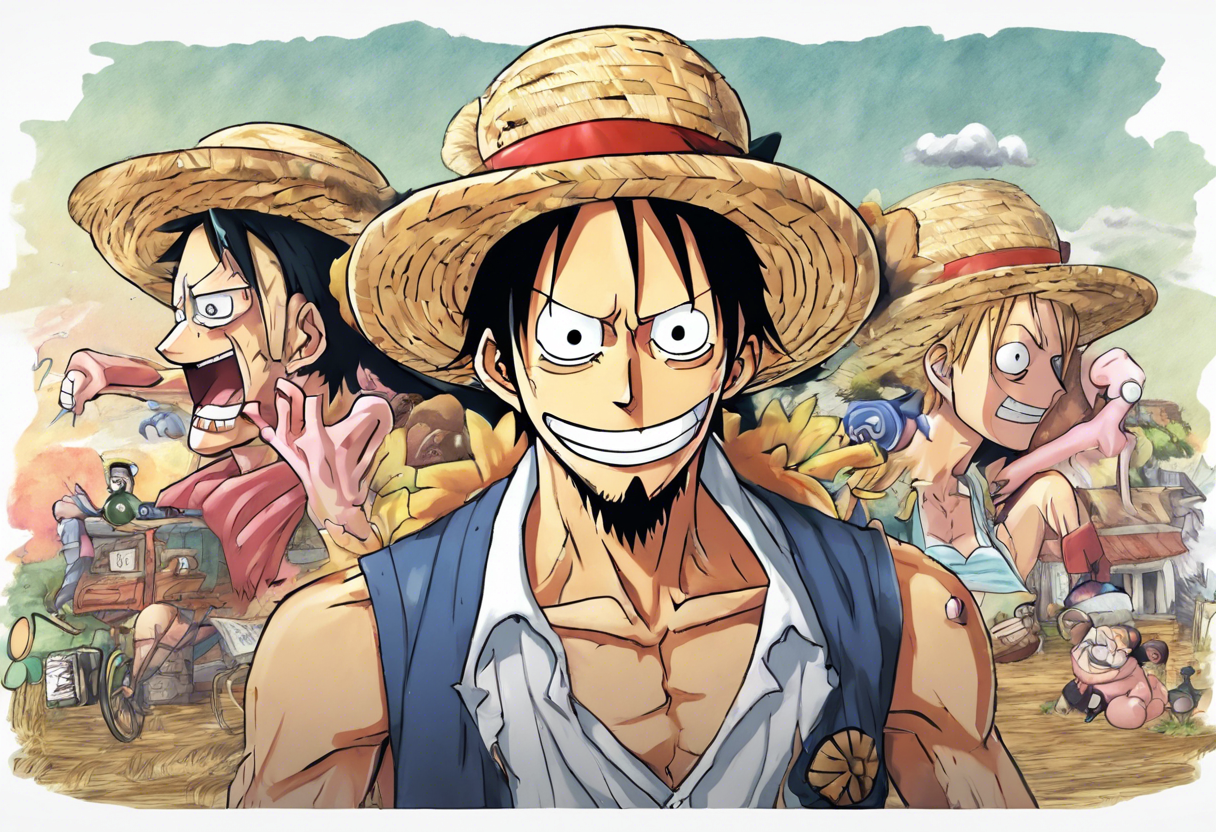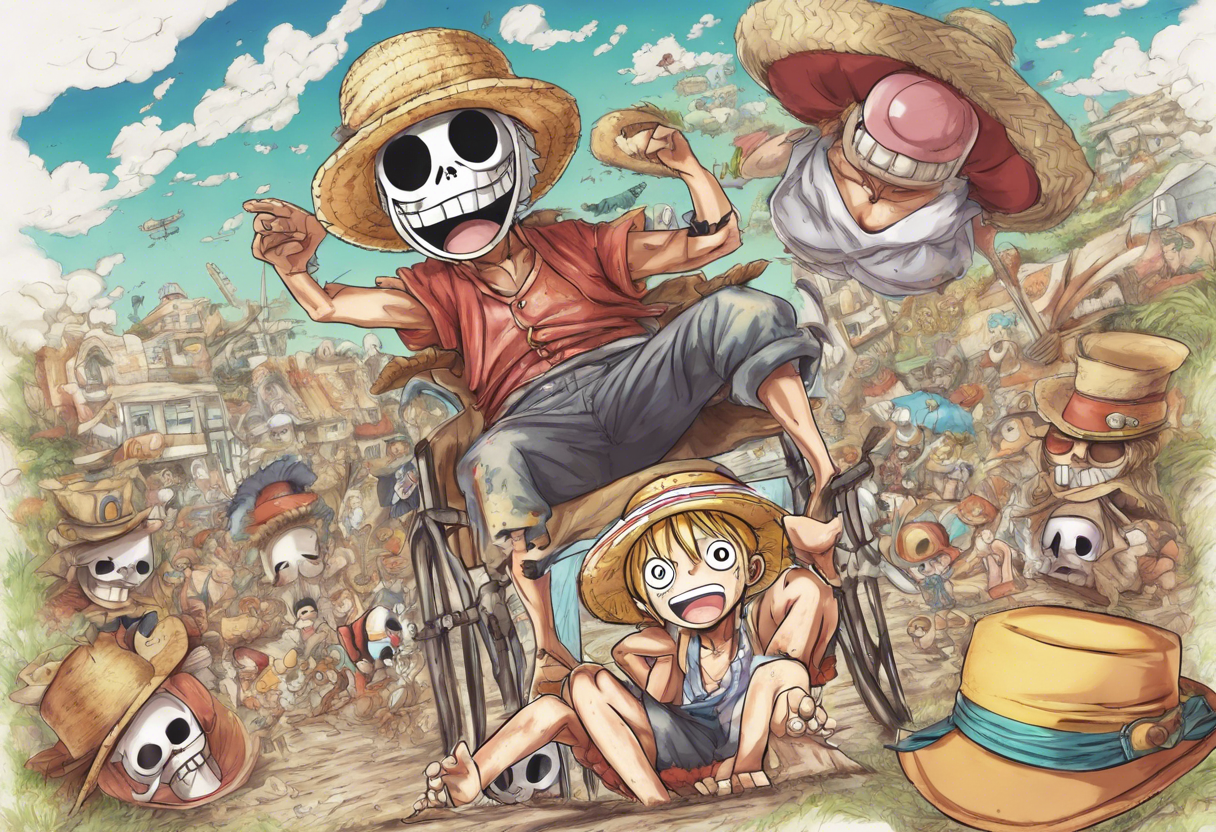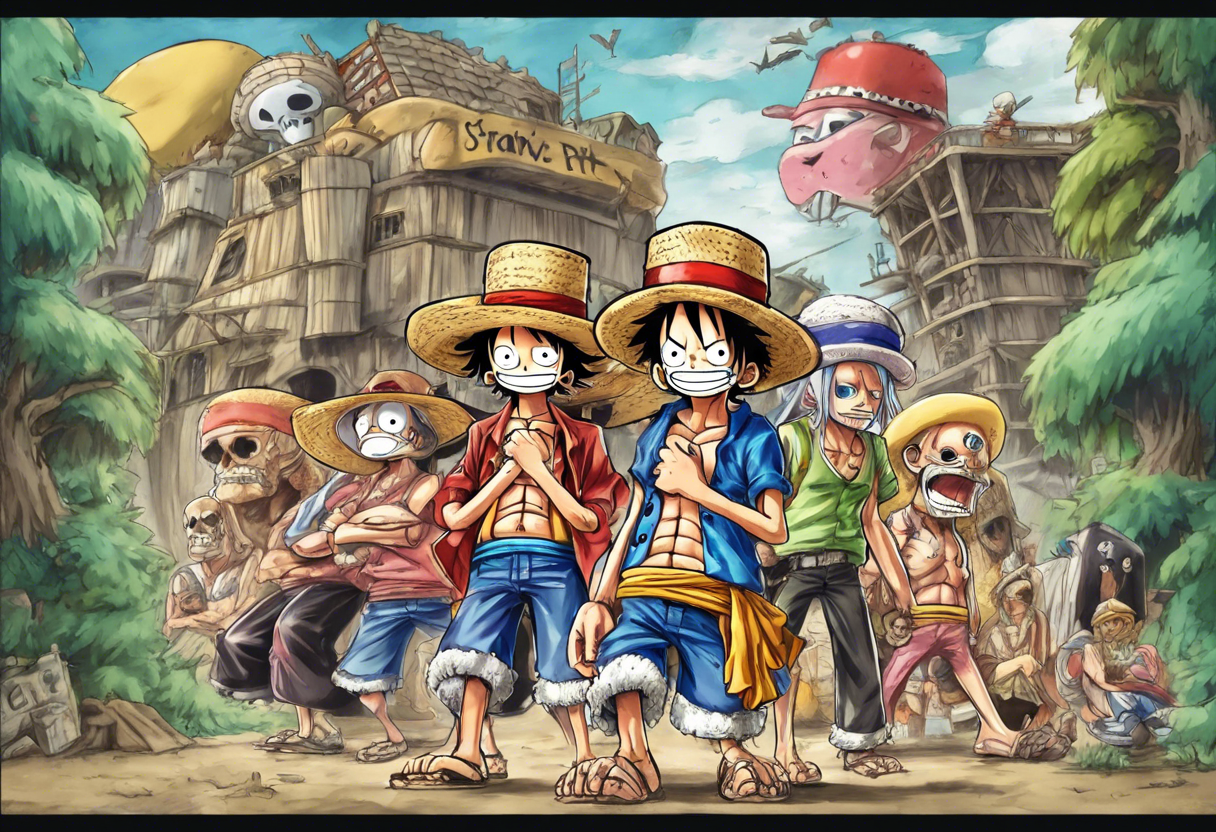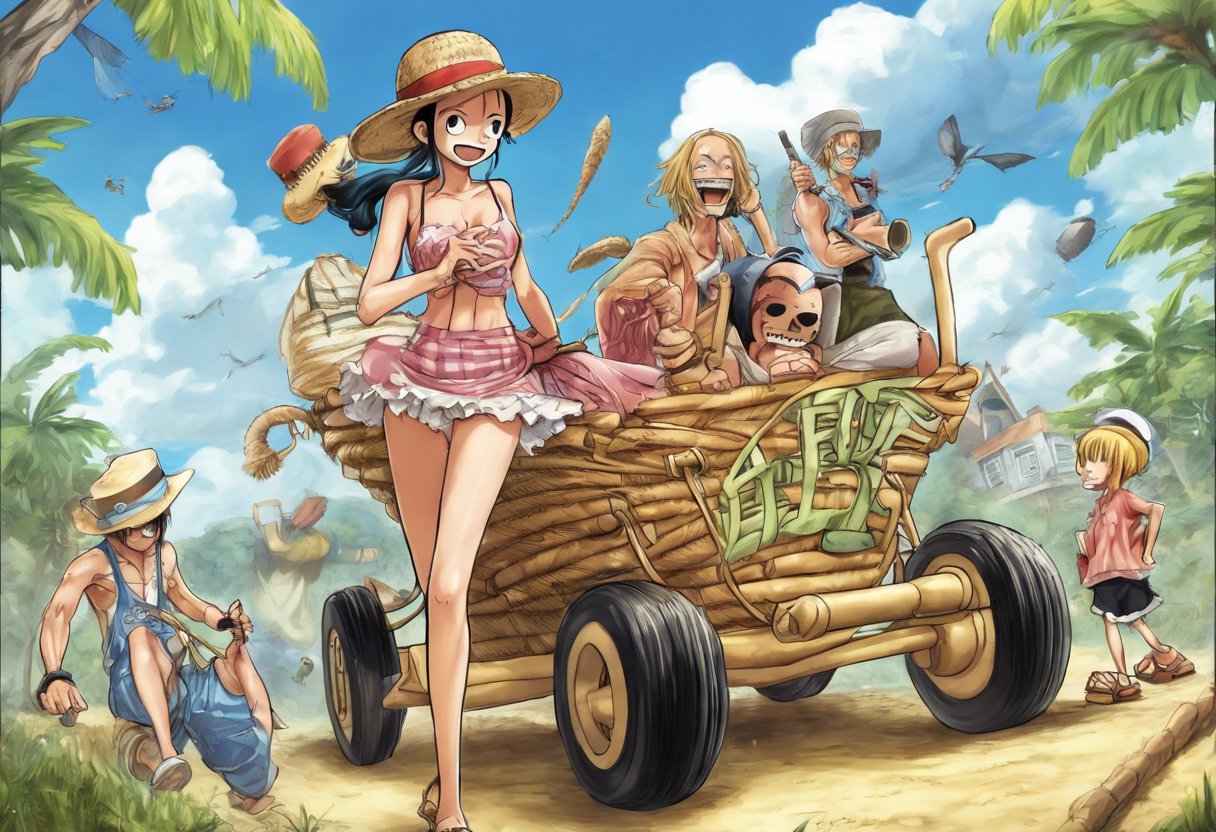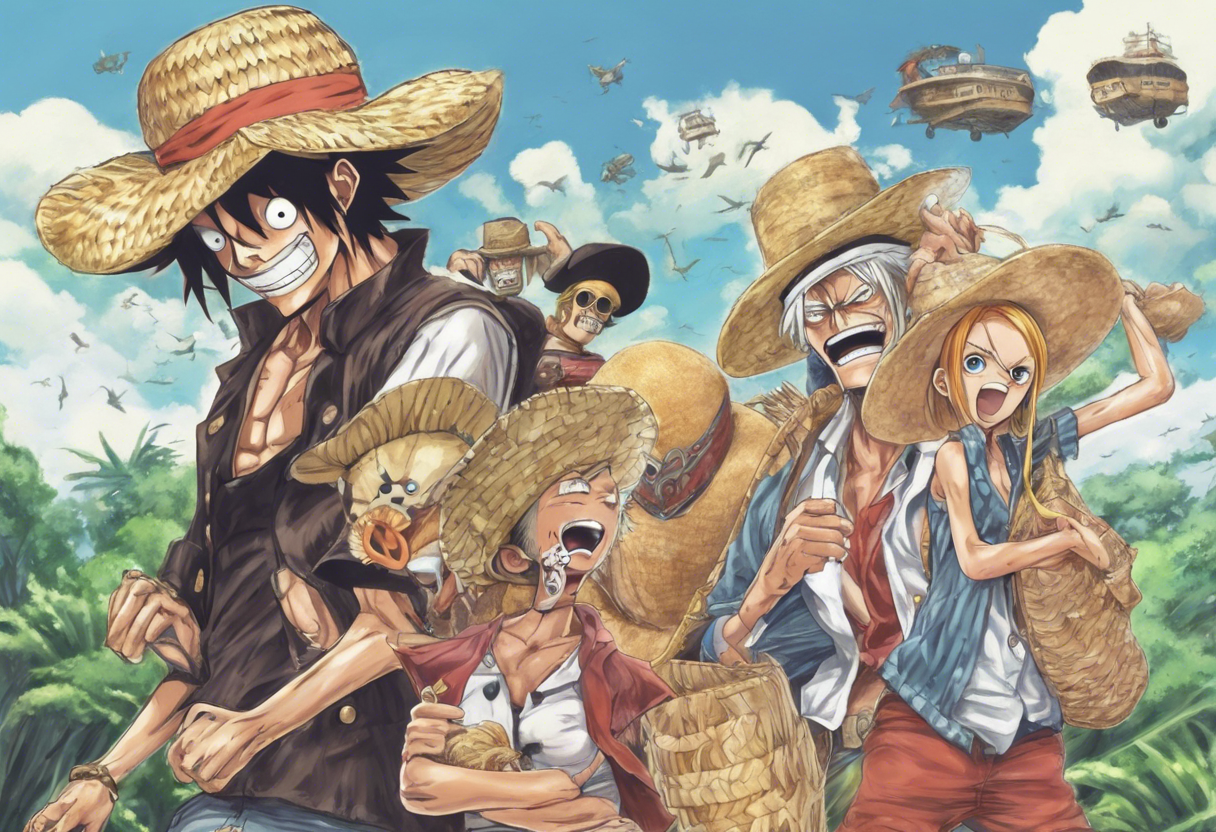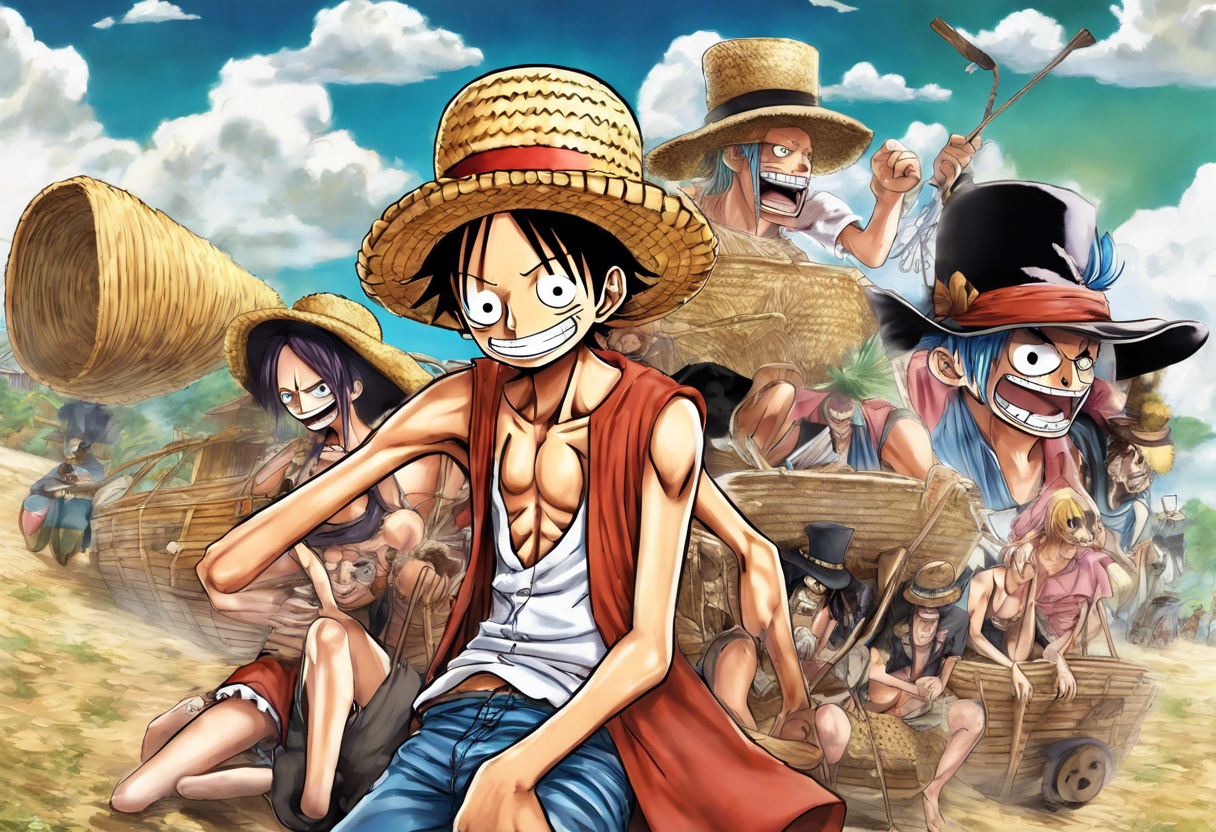Contents
Introduction
There is no specific anime or arc titled "Following the Straw Hat Little Buggy’s Big Adventure" in the One Piece series. However, the character of Buggy and his interactions with the Straw Hat Pirates are significant elements within the early stages of the One Piece narrative, particularly in the East Blue Saga.
The East Blue Saga, where Buggy’s character is prominently featured, is part of the larger One Piece series created by Eiichiro Oda. The anime adaptation, produced by Toei Animation, began broadcasting in 1999 and has since become a global phenomenon[4].
In the context of the East Blue Saga, Buggy’s character is introduced as a pirate clown and the ruler of Orange Town. This saga sets the stage for the Straw Hat Pirates’ adventures and introduces several key characters and themes that are central to the series.
Plot Summary
During the East Blue Saga, Monkey D. Luffy and his crew, including Roronoa Zoro, encounter Buggy D. Clown in Orange Town. Buggy, a Devil Fruit user with the ability to separate his body parts, rules the town with his band of freaks[1].
Luffy and Zoro’s adventure in Orange Town involves their encounter with Nami, a skilled navigator who initially betrays them but later joins the Straw Hat Pirates. The crew faces various challenges, including battling Buggy and his crew, and later dealing with the sinister plans of Kuro, a butler who aims to steal the fortune of a wealthy girl named Kaya[1].
The saga also includes the introduction of Sanji, a cook who joins the Straw Hat Pirates, and their visit to The Baratie, a ship-restaurant where they meet Sanji and get involved in a series of events that test their skills and camaraderie[1].
One of the pivotal arcs within the East Blue Saga is the Arlong Park arc, where Nami’s past is revealed, and the Straw Hats confront the Arlong Pirates. This arc is crucial as it showcases the bonds of friendship and the determination of the Straw Hats to protect each other[1].
Themes and Symbolism
The East Blue Saga, where Buggy’s character is featured, explores several central themes that are characteristic of the One Piece series.
Friendship and Bonds
The power of friendship and the bonds between characters are highlighted throughout the saga. Luffy’s ability to form strong connections with his crew members and other characters demonstrates the importance of companionship and support in overcoming challenges[2].
Dreams and Pursuit of Freedom
Each character in the Straw Hat Pirates has a unique dream they strive to fulfill. For example, Zoro aims to become the greatest swordsman, while Nami wants to map out the entire world. These dreams serve as motivating forces for their journey and reflect the theme of pursuing one’s dreams despite all odds[2].
Symbolism in Devil Fruits
Devil Fruits, like the one consumed by Buggy, symbolize the characters who possess them. Buggy’s ability to separate his body parts reflects his adaptable and cunning nature. This symbolism adds depth to the characters and enhances the storytelling[2].
Exploration of Morality
The series delves into complex moral dilemmas, particularly in the interactions between the Straw Hats and characters like Buggy and Kuro. These situations challenge the characters’ beliefs and values, encouraging readers to reflect on their own ethical perspectives[2].
Cultural Impact
The East Blue Saga, and by extension the character of Buggy, has had a significant cultural impact on the One Piece franchise.
Reception and Influence
The introduction of Buggy and the early adventures of the Straw Hat Pirates set the tone for the series, which has since become a cultural phenomenon. The saga’s blend of action, adventure, and humor has captivated audiences worldwide, influencing numerous adaptations, including anime episodes, movies, and video games[4].
Adaptations and References
Buggy’s character has appeared in various forms of media, including the anime series, movies, and video games. His comedic yet complex personality has made him a memorable character, often referenced in fan culture and other media[5].
Critical Reception
The East Blue Saga, including the arcs featuring Buggy, has received positive critical reception for its engaging storyline, character development, and thematic depth.
Initial Reception
At the time of its release, the anime adaptation of the East Blue Saga was praised for its vibrant characters, engaging storylines, and the unique world-building that Oda had created[4].
Long-term Impact
Over the years, the saga has continued to be celebrated for its foundational role in the One Piece series. Critics and fans alike appreciate the way it sets up the themes and characters that become central to the narrative as it progresses[2].
Legacy
The East Blue Saga, including Buggy’s adventures, has left a lasting legacy in the world of anime and manga.
Enduring Relevance
The themes of friendship, pursuit of dreams, and moral exploration continue to inspire new generations of fans. The saga’s influence can be seen in many other anime and manga series that have followed in its footsteps[2].
Influence on Filmmakers and Artists
The character development and storytelling techniques used in the East Blue Saga have influenced many filmmakers and artists. The series’ ability to balance action, comedy, and deep thematic exploration has set a high standard for anime storytelling[2].
Place in Cinematic History
The East Blue Saga is a cornerstone of the One Piece franchise, marking the beginning of a journey that has become one of the most beloved and enduring anime series of all time. Its impact on anime history is undeniable, and it continues to be celebrated for its contributions to the genre[4].
References
- https://poggers.com/blogs/anime/one-piece-east-blue-saga-summary-recap-review
- https://www.ask.com/entertainment/discovering-themes-symbolism-one-piece
- https://poggers.com/blogs/anime/one-piece-little-garden-arc-summary-recap-review
- https://en.wikipedia.org/wiki/List_of_One_Piece_story_arcs
- https://www.youtube.com/watch?v=u4-PEKRnd7o

